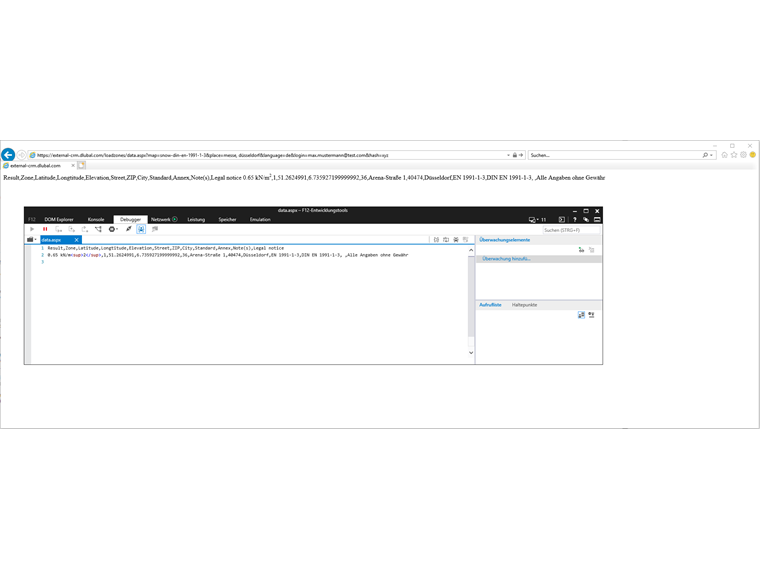Yes, the online service "Snow Load, Wind Speed, and Seismic Load Maps" provides WebService in the background, which can be used to determine the loads specific to a location without opening the website.
WebService can be used for all load maps from the visible online service and is controlled by a URL address. In this case, an external process (your application) sends a request URL address to our server (Dlubal) and receives the load information in the CSV format. To ensure that the process works, the URL address must contain all specifications for defining a load type, standard, geolocation, output language, and user. The final URL is then composed of these components.
The load type and the standard are defined by the "map" component. The first part describes the load type (for example, snow, wind, or earthquake) and the second part describes the standard (for example, din-en-1991-1-3).
→ map=snow-din-en-1991-1-3
The geolocation is defined by the "place" or "position" component. The "place" option acts as the search option in the visible online service. The geolocation is defined here by the search terms, address, and so on. The "position" option defines the geolocation by using the geographic coordinates in the format [latitude in °, longitude in °].
→ place=messe, duesseldorf
→ position=51.2624991,6.735927199999992
The display language of the results is defined by the "language" component. The language is defined by an abbreviation (de - German, en - English, and so on).
→ language=en
The identity of the user is defined using the "login" and "hash" components. The "login" component describes the user's email address and the "hash" component describes a hidden password. To ensure that the login works, it is necessary to save the email address in a valid Dlubal account. The corresponding "hash" component is specified in the Dlubal account under "My Data" – "Online Service Identity".
→ login=john.doehttps://external-crm.dlubal.com/loadzones/data.aspx?map=snow-din-en-1991-1-3&place=messe, duesseldorf&language=en&login=john.doe">test.com&hash=xyz
After having sent the data, the server returns the requested load information in the CSV format.
To be able to send the load requests to our server without restrictions, a Geo-Zone Tool package is required. The Geo-Zone Tool package includes a certain number of data requests. Each query reduces the number of available requests purchased within the package.
Since the WebService is linked with the purchased data package, it is necessary to deal carefully with the identity components and request URL with regard to data protection. For example, you have to be careful not to provide the request URL with identity components to unauthorized third parties.
More FAQ About Geo-Zone Tool and API:

